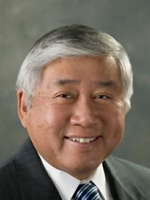Predictably, U.S. Citizenship and Immigration Services (USCIS) reached the H-1B cap for fiscal year 2015 in the first week of April. For those who need new work visas, but were shut out, there may be a “Plan B” under other visa categories.
Background
The H-1B program, which allows employers to seek to hire nonimmigrant aliens as workers in specialty occupations, provides 65,000 visas for the general category and 20,000 under the advanced degree exemption.
For the second year in a row, USCIS reached the H-1B cap during the first five days of filing. This recalls the situation that existed in 2007 and 2008, before the recession, when caps also were met quickly. It appears that the demand for H-1B workers fluctuates with the economy.
On April 7, 2014, USCIS announced that it had received enough H-1B petitions to reach the statutory cap for fiscal year 2015, beginning on October 1, 2014. On April 10, 2014, USCIS announced that it had received 172,500 petitions. A random computer selection process determined which of the received petitions will be processed for the caps of 65,000 visas for the general category and 20,000 under the advanced degree exemption. Petitions not selected have been rejected and are being returned to employers, with the filing fee checks uncashed.
Reform
The uncertainty of relying on a lottery system to obtain needed employees has been a challenge for many U.S. employers. Congress has been trying to address the problem.
The Senate’s comprehensive reform bill includes provisions that would increase the number of H-1B visas to between 115,000 to 180,000 per year. The exact number would depend on economic factors. While other provisions of the bill, as currently written, would raise the cost of many of those H-1B’s by artificially inflating the required wage for H-1B workers, the prospect of a cap that is more in line with America’s hiring needs is welcomed. The House has not yet passed any bill expanding the availability of H-1B visas. Compete America, a tech industry lobby group, has encouraged the House to pass the Skills Act, a standaloneH-1B bill. The current signals out of Washington do not indicate strong support for either comprehensive reform or a piecemeal solution, and observers fret that significant improvements to the immigration system may not materialize this year.
Plan B
All is not lost, however, for prospective hires of foreign national professionals. Employers and employees meeting certain requirements may qualify for an alternative work visa. Alternative visa options for employees locked out by the H-1B cap include the following:
- For Canadian and Mexican professionals, the TN (“Treaty-NAFTA”) visa available under the North American Free Trade Agreement.
- For nationals of Australia, the E-3 visa.
- For nationals of Chile or Singapore, the H-1B1 visa.
- For intracompany transferees, the L-1 visa. An organization with foreign operations can transfer employees to its U.S.-affiliated company in a similar position under certain circumstances.
- For individuals with a U.S. degree in a science, technology, engineering or math (STEM) field and employers enrolled in E-Verify, the 17-month optional practical training (OPT) extension.
- For individuals who may qualify under the extraordinary ability criteria, the O-1 visa.
- For essential employees if the company and foreign national share the same nationality, the E-1 (Treaty Trader) or E-2 (Treaty Investor) visa.
- For individuals in F-1 status, continue with F-1 studies and look at internship opportunities under curricular practical training (CPT).• For individuals who may qualify under the EB-1 extraordinary ability, EB-1 outstanding researcher, or EB-2 national interest waiver (NIW) criteria, pursue concurrent I-140/485 green card process and work authorization issuance.
- For individuals whose employers have offices outside the United States, the individuals can be placed on the foreign payroll and work abroad until next year’s H-1B filing period or until another type of work visa becomes available.
- For individuals entering a structured training program, the H-3 visa.
- For individuals who can be classified as an Exchange Visitor, the J-1 visa.
Each of these visas has specific legal requirements that the employer and employee must meet to qualify. Every situation is different and your legal representative should be consulted to ensure you have an alternative plan should the H-1B petition filed on behalf of a foreign national employee be rejected.





 />i
/>i

